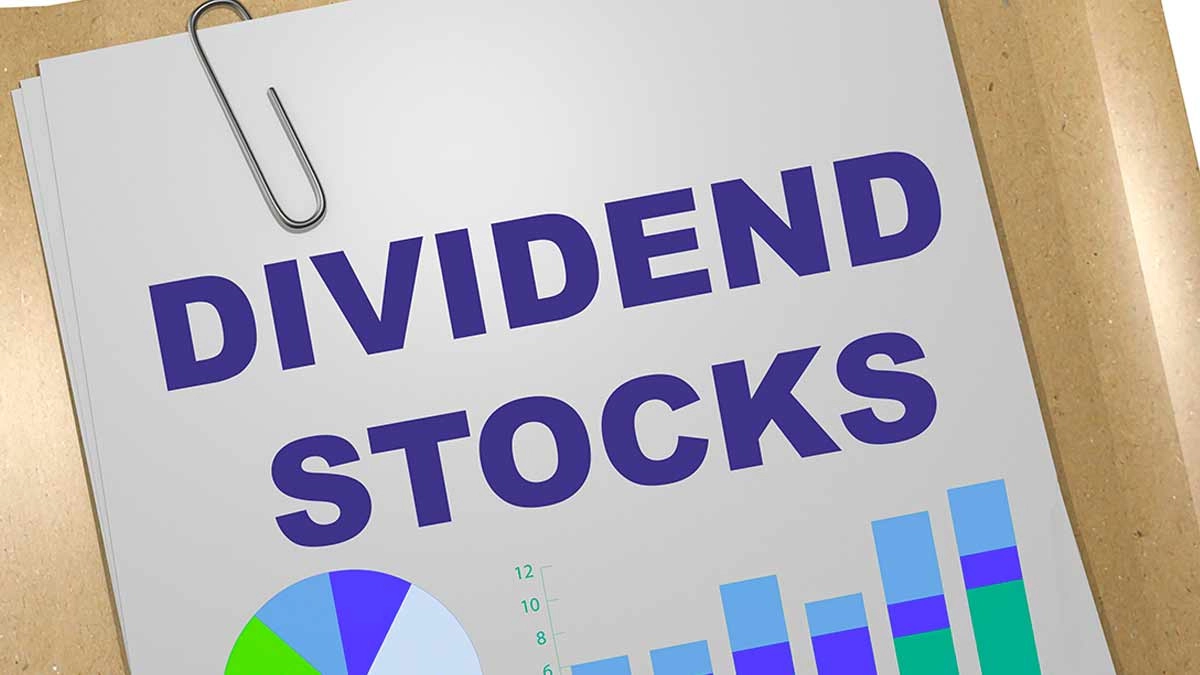In today’s fast-paced world, many individuals aspire to achieve financial independence and generate passive income streams that can provide a steady inflow of money while they sleep. Fortunately, there are numerous investment options available that can help turn this dream into a reality. By strategically allocating your funds into these top 10 investment options, you can set the stage for a passive income journey that allows your wealth to grow and work for you, even in your moments of rest.
The concept of passive income revolves around the idea of earning money without actively trading time for it. Instead of solely relying on a traditional 9-to-5 job, passive income enables you to build wealth through investments that generate ongoing returns. It offers the potential to achieve financial freedom, allowing you to have more control over your time and pursue the things you are truly passionate about.
This guide will explore a carefully curated list of the top 10 investment options for passive income. Each option represents a unique avenue for wealth creation and has the potential to provide a steady stream of earnings, regardless of whether you are actively involved or sound asleep. From traditional avenues like dividend stocks and bonds to innovative opportunities such as peer-to-peer lending and automated trading systems, we will delve into the key features, benefits, and risks associated with each investment option.
It’s important to note that while the allure of passive income is captivating, investing always carries some degree of risk. Conducting thorough research, understanding your risk tolerance, and seeking advice from financial professionals are crucial steps before committing your hard-earned capital. By carefully selecting the right investment options and diversifying your portfolio, you can embark on a path to financial independence, where your money continues to grow even as you embrace the restful hours of sleep. So, let’s explore these 10 investment options together and discover how you can make money while you sleep.
Dividend Stocks

In the realm of investment opportunities, dividend stocks stand tall as a formidable choice for those seeking regular income streams. By directing your resources towards dividend-paying stocks, you can tap into a world where profitable companies generously share their wealth with their esteemed shareholders. Let us delve into the intricacies of this investment avenue, uncovering the possibilities it holds for your financial journey.
What are Dividend Stocks
At their core, dividend stocks represent a class of shares issued by companies that consistently generate profits. These exceptional companies, driven by their success, elect to distribute a portion of their earnings back to their loyal shareholders in the form of dividends. Investing in these stocks allows you to become a beneficiary of their financial accomplishments, creating an opportunity for regular income flow.
The Advantages of Dividend Stocks
- Steady Income Streams. Unlike some volatile investments, dividend stocks provide a stable and predictable stream of income. The reliable nature of dividends can grant you peace of mind as you navigate the complex landscape of investments.
- Potential for Growth. Dividend stocks possess the potential for both income generation and capital appreciation. By selecting wisely and investing in companies with a track record of dividend growth, you can experience the dual benefit of increasing dividend payments and the growth of your initial investment.
- Inflation Hedge. Dividend payments are often adjusted for inflation, serving as a shield against the erosion of purchasing power. This attribute can help safeguard your wealth against the corrosive effects of rising prices.
How to Identify Promising Dividend Stocks
- Consistent Dividend History. Look for companies with a proven track record of regular dividend payments over an extended period. A reliable history indicates financial stability and a commitment to rewarding shareholders.
- Dividend Yield. Evaluate the dividend yield, which represents the annual dividend payment divided by the stock price. A higher yield can signify a potentially more lucrative investment; however, exercise caution and analyze the company’s financial health to avoid unsustainable yields.
- Financial Performance. Scrutinize the company’s financial statements to assess its profitability, revenue growth, and debt levels. A fundamentally strong company with healthy financials is more likely to sustain its dividend payments.
Risks and Considerations
- Market Volatility. Dividend stocks are not immune to market fluctuations. Economic downturns or company-specific challenges can impact dividend payments. Diversifying your dividend stock portfolio can help mitigate risks associated with individual companies.
- Dividend Cuts. Companies may reduce or suspend dividend payments in challenging times. Conduct thorough research and keep an eye on the company’s financial health to identify any potential red flags.
Conclusion. Navigating the World of Dividend Stocks
Dividend stocks emerge as an enticing investment avenue, offering a regular income stream to those who diligently explore the market. By investing in profitable companies that share their success, you unlock a pathway to financial stability and potential growth. Nevertheless, it is crucial to exercise caution, conduct thorough analysis, and maintain a diversified portfolio to weather the uncertainties that come with any investment endeavor. Embrace the power of dividend stocks and embark on a journey that rewards you even as you dream.
Real Estate Investment Trusts (REITs)

Within the vast landscape of investment opportunities, Real Estate Investment Trusts (REITs) stand as compelling entities. These unique companies assume ownership, operation, or financing responsibilities for income-generating real estate assets. Investing in REITs presents an avenue to tap into the profitability of rental properties, commercial buildings, and mortgages. Let us embark on a journey through the realm of REITs, exploring the avenues they offer to unlock the potential for passive income.
What are REITs
REITs, or Real Estate Investment Trusts, represent companies that specialize in real estate ownership and management. These entities are legally obligated to distribute a significant portion of their income to shareholders in the form of dividends. By investing in REITs, you gain an indirect ownership stake in a diversified portfolio of real estate assets, allowing you to benefit from their income-generation capabilities.
The Advantages of Investing in REITs
- Passive Income Streams. REITs provide investors with an opportunity to earn passive income through regular dividend distributions. By channeling your resources into these entities, you can potentially generate a consistent cash flow without the active involvement required in traditional property ownership.
- Diversification and Professional Management. REITs offer the advantage of diversification by owning a broad range of real estate properties. Moreover, these companies are managed by experienced professionals who handle property operations, maintenance, and tenant management on your behalf.
- Accessible and Liquid. Investing in REITs provides the advantage of liquidity and accessibility. These entities are traded on stock exchanges, allowing you to buy or sell shares with relative ease compared to physical real estate assets.
Types of REITs and Their Income Sources
- Equity REITs. These REITs primarily focus on owning and managing income-generating properties. Rental income from residential, commercial, or industrial properties forms the core revenue stream for equity REITs.
- Mortgage REITs. Mortgage REITs engage in financing real estate investments by providing loans or purchasing existing mortgages. Their income is derived from interest payments on mortgage loans.
- Hybrid REITs. Hybrid REITs combine the characteristics of both equity and mortgage REITs, investing in a combination of properties and mortgages. They generate income from both rental revenues and interest payments.
Considerations for Investing in REITs
- Research and Due Diligence. Thoroughly examine the REIT’s investment strategy, management team, historical performance, and the quality of its real estate portfolio. Assessing these factors can help you make informed investment decisions.
- Risk Assessment. Consider the risks associated with investing in REITs, including fluctuations in property values, interest rate changes, and economic conditions. Diversifying your REIT investments can help mitigate some of these risks.
- Dividend Stability. Analyze the REIT’s dividend history, payout ratio, and cash flow to evaluate the sustainability of dividend payments. A consistent track record of dividend distribution is indicative of financial stability.
Peer-to-Peer Lending

Within the realm of finance, a transformative avenue has emerged – peer-to-peer lending. This innovative practice enables individuals to lend money directly to other individuals or small businesses, fostering a symbiotic relationship built on trust and financial empowerment. Peer-to-peer lending platforms serve as intermediaries, facilitating the loan process and managing administrative intricacies. Join us as we delve into the depths of peer-to-peer lending, uncovering the potential it holds for both borrowers and lenders.
Understanding Peer-to-Peer Lending
Peer-to-peer lending serves as a direct alternative to traditional financial institutions by connecting borrowers with lenders through online platforms. These platforms create an environment where individuals or businesses seeking loans can connect with those willing to lend money. By cutting out intermediaries, peer-to-peer lending offers an opportunity for borrowers to access funds and lenders to earn interest on their investments.
Benefits of Peer-to-Peer Lending
- Enhanced Return on Investment. Lenders participating in peer-to-peer lending can potentially earn higher returns compared to traditional savings accounts or bonds. By investing directly in loans, lenders can receive interest payments as borrowers repay their obligations.
- Diversification. Peer-to-peer lending allows lenders to diversify their investments across various borrowers and loans. This diversification can help spread risk and minimize the impact of defaults.
- Accessibility. Peer-to-peer lending platforms provide an accessible space for both borrowers and lenders, enabling individuals who may face challenges in securing traditional loans to access financing. Likewise, lenders can participate with relatively small amounts of capital, increasing the inclusivity of the lending process.
How Peer-to-Peer Lending Works
- Borrower Application. Individuals or businesses seeking loans apply through the peer-to-peer lending platform, providing relevant information about their financial situation and purpose of the loan.
- Lender Selection. Lenders review loan listings on the platform, considering factors such as borrower creditworthiness, loan purpose, and interest rates. They can choose to lend a portion or the full amount of the requested loan.
- Loan Funding. Once lenders commit to funding the loan, the platform aggregates the investments to provide the borrower with the requested amount. This process enables multiple lenders to contribute to a single loan.
- Repayment and Interest. Borrowers make regular repayments, including both principal and interest, which are distributed to the lenders by the platform. Lenders receive interest payments as borrowers fulfill their loan obligations.
Considerations for Peer-to-Peer Lending
- Risk Assessment. Assess the creditworthiness of borrowers and review their loan purpose, repayment plan, and financial stability. Peer-to-peer lending platforms often provide tools and metrics to help evaluate borrowers’ risk profiles.
- Platform Selection. Thoroughly research and choose reputable peer-to-peer lending platforms with a track record of success, strong borrower screening processes, and transparent fees.
- Diversification and Risk Management. Spread your lending investments across multiple borrowers and loans to mitigate the risks associated with individual defaults.
Bonds

In the realm of investments, bonds emerge as stalwart pillars of stability and returns. These fixed-income securities present an opportunity to lend capital to governments or corporations for predetermined periods, enabling investors to earn regular interest payments until the bond reaches maturity. Join us as we delve into the depths of the bond market, unraveling the intricacies of this time-honored investment avenue.
Understanding Bonds
Bonds represent debt instruments through which investors lend money to entities, such as governments or corporations, in exchange for periodic interest payments. These fixed-income securities are characterized by their fixed interest rates, maturity dates, and face values.
Benefits of Bond Investments
- Steady Income Stream. Bonds provide investors with a reliable income stream through periodic interest payments. The fixed interest rate ensures a predictable flow of income throughout the bond’s tenure.
- Preservation of Capital. Bonds are generally considered safer investments compared to equities, as they offer a predetermined return of principal at maturity. This feature provides a level of capital preservation and stability.
- Diversification. Bonds offer diversification benefits, allowing investors to balance their portfolios with assets that have different risk profiles. Combining bonds with other investments can help reduce overall portfolio volatility.
Types of Bonds
- Government Bonds. Issued by governments, these bonds are considered low-risk investments. Treasury bonds, treasury notes, and treasury bills are examples of government bonds that differ based on their respective maturities.
- Corporate Bonds. Corporations issue these bonds to raise capital for various purposes, such as expansion or debt refinancing. Corporate bonds can offer higher yields compared to government bonds but carry a higher level of risk.
- Municipal Bonds. Issued by state or local governments, municipal bonds finance public projects like schools, roads, or utilities. Interest income from municipal bonds is often exempt from federal income tax, making them attractive to investors in higher tax brackets.
Evaluating Bonds
- Credit Quality. Assess the creditworthiness of the bond issuer by examining credit ratings provided by reputable rating agencies. Higher-rated bonds typically offer lower yields but carry lower credit risk.
- Yield and Coupon Rate. Consider the bond’s yield and coupon rate, which represent the interest payments as a percentage of the bond’s face value. Higher yields may be associated with higher risks.
- Maturity Date. Evaluate the bond’s maturity date, which indicates the period until the bond reaches its face value. Longer-maturity bonds may offer higher yields but can be subject to greater interest rate risk.
Risks and Considerations
- Interest Rate Risk. Bond prices can fluctuate inversely with changes in interest rates. Rising interest rates can lead to a decrease in bond prices, impacting potential returns.
- Credit Risk. Bonds with lower credit ratings carry a higher risk of default. Conduct thorough research on the bond issuer’s financial stability and creditworthiness.
- Inflation Risk. Inflation can erode the purchasing power of fixed interest payments over time. Consider bonds that offer inflation-protected features to mitigate this risk.
Index Funds

Within the realm of investment opportunities, index funds stand as a testament to the power of simplicity. These investment funds offer individuals the chance to replicate the performance of specific market indices, such as the renowned S&P 500. By investing in index funds, one can passively earn income as the underlying index grows. Join us as we explore the world of index funds and unlock their potential to harness passive income.
Understanding Index Funds
Index funds serve as investment vehicles designed to mirror the performance of a particular market index. These funds operate on the principle of passive investing, aiming to replicate the returns and characteristics of the chosen index, rather than attempting to outperform it.
The Advantages of Index Funds
- Market Diversification. Index funds provide instant diversification by representing a broad market index. By investing in an index fund, you gain exposure to a diversified portfolio of securities, spreading risk across multiple companies and sectors.
- Lower Costs. Index funds typically have lower expense ratios compared to actively managed funds. With no need for extensive research or active trading, index funds eliminate the costs associated with active management, making them a cost-effective choice for investors.
- Simplicity and Accessibility. Index funds offer simplicity and accessibility, making them suitable for both novice and experienced investors. Their straightforward structure and availability through various financial institutions enable easy entry into the world of passive investing.
Investing in Index Funds
- Choosing the Right Index. Select an index fund that aligns with your investment goals and risk tolerance. Popular indices include the S&P 500, Dow Jones Industrial Average, or the NASDAQ Composite.
- Fund Selection. Evaluate different index funds based on their expense ratios, tracking error, and historical performance. Choose funds with low expenses and a track record of closely mirroring the index’s returns.
- Fund Size. Consider the size of the index fund, as larger funds tend to have greater liquidity and lower bid-ask spreads, making them more cost-effective to trade.
Risks and Considerations
- Market Volatility. Index funds are not immune to market fluctuations. While they offer diversification, they are still exposed to general market risks. It is crucial to be prepared for potential short-term fluctuations in the value of your investment.
- Tracking Error. Index funds aim to replicate the performance of the underlying index, but they may not perfectly match it. Variations in tracking error can occur due to fees, timing of trades, or differences in the index methodology.
- Market Concentration. Some indices may be heavily concentrated in specific sectors or companies. Evaluate the composition of the index and consider the associated risks before investing in an index fund.
Rental Properties

Within the realm of passive income, rental properties stand as beacons of potential. These properties offer individuals the opportunity to own and rent out residential or commercial spaces, creating a consistent stream of income through monthly rental payments. However, it is essential to recognize that this avenue requires active management and diligent property maintenance. Join us as we explore the world of rental properties and unlock their potential to cultivate a sustainable and profitable passive income.
Understanding Rental Properties
Rental properties represent tangible assets that individuals own and lease to tenants in exchange for regular rental payments. These properties can encompass residential dwellings, such as houses or apartments, as well as commercial spaces like offices or retail stores.
The Advantages of Rental Properties
- Steady Income Stream. Rental properties offer a reliable and consistent source of income through monthly rental payments. By selecting desirable properties and attracting reliable tenants, investors can secure a steady cash flow.
- Potential for Appreciation. Over time, rental properties have the potential to appreciate in value, leading to capital gains. This appreciation can result from factors such as market demand, location desirability, and property improvements.
- Tax Benefits. Rental property ownership often comes with tax advantages, including deductions for mortgage interest, property taxes, maintenance expenses, and depreciation. These benefits can help optimize tax liability and enhance overall returns.
Investing in Rental Properties
- Property Selection. Carefully evaluate potential properties based on factors such as location, market demand, rental potential, and property condition. Research the local rental market to ensure a viable demand for the type of property you are considering.
- Financing Options. Explore financing options, such as mortgages or loans, to support the purchase of rental properties. Compare interest rates, terms, and fees to secure the most favorable financing arrangement.
- Property Management. Decide whether to manage the property yourself or hire a professional property management company. Property management involves tasks such as tenant screening, rent collection, maintenance, and addressing tenant concerns.
- Rental Agreements and Legal Considerations. Draft thorough and legally sound rental agreements that outline the terms and conditions of the tenancy. Familiarize yourself with local landlord-tenant laws to ensure compliance and protect your rights as a property owner.
Risks and Considerations
- Vacancy and Cash Flow. Rental properties may experience periods of vacancy, leading to a temporary loss of rental income. It is crucial to factor in potential vacancy rates and maintain adequate cash reserves to cover expenses during these periods.
- Property Maintenance and Repairs. Owning rental properties entails ongoing maintenance and repair responsibilities. Budget for regular upkeep, emergencies, and potential capital improvements to preserve the value of the property and keep tenants satisfied.
- Tenant Management. Dealing with tenant-related issues, such as late payments, property damage, or disputes, requires effective communication and problem-solving skills. Establish clear tenant screening criteria to minimize potential risks.
High-Yield Savings Accounts

In the realm of passive income, high-yield savings accounts emerge as hidden gems of opportunity. While not commonly viewed as traditional investments, these accounts provide a safe and accessible avenue to earn passive income through interest on your savings. Join us as we delve into the world of high-yield savings accounts and unlock their potential to cultivate a steady stream of income.
Understanding High-Yield Savings Accounts
High-yield savings accounts are financial products that offer individuals the opportunity to earn competitive interest rates on their savings. These accounts are typically offered by banks and credit unions and provide a higher interest rate compared to standard savings accounts.
The Advantages of High-Yield Savings Accounts
- Safety and Security. High-yield savings accounts are typically insured by governmental agencies, such as the Federal Deposit Insurance Corporation (FDIC) in the United States. This insurance provides a layer of protection for your savings, ensuring their safety even in the event of bank failure.
- Accessible and Liquid. High-yield savings accounts offer liquidity and accessibility, allowing you to withdraw funds when needed without penalties or restrictions. This makes them a suitable choice for short-term savings goals or emergency funds.
- Competitive Interest Rates. High-yield savings accounts provide higher interest rates compared to traditional savings accounts. This allows your savings to grow at a faster pace, enhancing the potential for passive income.
Investing in High-Yield Savings Accounts
- Research and Comparison. Explore different financial institutions to find high-yield savings accounts that offer competitive interest rates. Consider factors such as account fees, minimum balance requirements, and online banking capabilities.
- Account Requirements. Understand any specific requirements associated with high-yield savings accounts, such as minimum deposit amounts or monthly transaction limits. Ensure that the account aligns with your financial goals and preferences.
- Savings Strategy. Determine how much you can comfortably save and develop a systematic savings strategy. Set realistic savings goals and make regular contributions to maximize the growth of your high-yield savings account.
Risks and Considerations
- Inflation Risk. High-yield savings accounts may not offer returns that outpace inflation. While they provide a safe haven for your savings, it’s important to consider the impact of inflation on the purchasing power of your money over time.
- Interest Rate Fluctuations. Interest rates on high-yield savings accounts can vary over time. Keep track of market trends and be prepared for potential fluctuations that may impact the interest earned on your savings.
- Opportunity Cost. While high-yield savings accounts provide security and competitive interest rates, they may offer lower returns compared to other investment options with higher risks. Evaluate your risk tolerance and consider diversifying your investment portfolio to maximize potential returns.
Dividend Exchange-Traded Funds (ETFs)

In the realm of passive income, dividend exchange-traded funds (ETFs) emerge as a compelling avenue. These investment vehicles offer exposure to a diversified portfolio of dividend-paying stocks, providing investors with an opportunity to earn passive income from multiple companies. Join us as we delve into the world of dividend ETFs and unlock their potential to cultivate broad market exposure and a steady stream of income.
Understanding Dividend ETFs
Dividend ETFs represent investment funds that aim to replicate the performance of dividend-focused indices or baskets of dividend-paying stocks. These ETFs provide investors with a convenient way to gain exposure to a diversified portfolio of companies that distribute regular dividends.
The Advantages of Dividend ETFs
- Diversification. Dividend ETFs offer instant diversification by comprising a range of dividend-paying stocks from various sectors and industries. This diversification helps mitigate risks associated with investing in individual stocks and provides exposure to a broader market.
- Passive Income. Dividend ETFs allow investors to earn passive income through the regular dividend payments distributed by the underlying companies. These payments can provide a consistent stream of income, making dividend ETFs an attractive option for investors seeking regular cash flow.
- Professional Management. Dividend ETFs are managed by professional fund managers who monitor the composition of the fund, make strategic decisions, and ensure the fund closely tracks the performance of the underlying dividend-focused index.
Investing in Dividend ETFs
- Research and Selection. Conduct thorough research to identify dividend ETFs that align with your investment goals and risk tolerance. Consider factors such as the fund’s historical performance, expense ratios, dividend yield, and the underlying index it aims to replicate.
- Diversify with Sector and Geographic Exposure. Consider diversifying your dividend ETF investments by selecting funds that provide exposure to different sectors or geographic regions. This diversification can help reduce risk and enhance overall portfolio performance.
- Dividend Reinvestment. Some dividend ETFs offer dividend reinvestment plans (DRIPs), allowing investors to automatically reinvest dividends back into the fund. This can compound returns over time and enhance the growth of your investment.
Risks and Considerations
- Market Volatility. Dividend ETFs are still subject to market fluctuations and can experience periods of volatility. It’s important to be prepared for short-term price fluctuations in the fund’s value while focusing on the long-term benefits of passive income and potential capital appreciation.
- Dividend Cuts. While dividend-paying stocks tend to be more stable, companies may reduce or eliminate dividend payments in adverse economic conditions. Investors should be aware of the underlying companies’ financial health and track any changes in their dividend policies.
- Expense Ratios and Fees. Evaluate the expense ratios and associated fees of dividend ETFs, as higher expenses can eat into your overall returns. Look for funds with competitive expense ratios to optimize your investment efficiency.
Royalty Income

In the world of passive income, automated trading systems emerge as a compelling avenue. Leveraging the prowess of computer algorithms, these systems, also known as algorithmic trading or robo-trading, execute trades on your behalf. While venturing into this option demands meticulous research and monitoring, it holds the potential to generate passive income if the system performs optimally. Join us as we delve into the realm of automated trading systems and uncover their power to cultivate passive income generation.
Understanding Automated Trading Systems
Automated trading systems employ sophisticated computer algorithms to analyze market conditions, identify trading opportunities, and execute trades without manual intervention. These systems utilize predefined rules and parameters to make buying and selling decisions on behalf of the investor.
The Advantages of Automated Trading Systems
- Efficiency and Speed. Automated trading systems swiftly execute trades, capitalizing on market opportunities within milliseconds. This speed eliminates human limitations, enabling timely and efficient trading.
- Elimination of Emotional Bias. Automated trading systems eliminate emotional decision-making, which can often hinder rational investment choices. By relying on preset rules and algorithms, these systems make objective trading decisions based on market indicators.
- Continuous Monitoring. Automated trading systems can continuously monitor markets and execute trades around the clock. This ensures that opportunities are capitalized upon, even when the investor is not actively monitoring the market.
Investing in Automated Trading Systems
- Research and Selection. Conduct extensive research to identify reputable automated trading systems with a proven track record. Evaluate factors such as the system’s historical performance, risk management strategies, and the transparency of trading signals.
- System Parameters and Customization. Understand the parameters and rules used by the automated trading system. Some systems allow customization and adjustment of risk levels, trading strategies, and asset classes to align with your investment goals and risk tolerance.
- Backtesting and Performance Analysis. Prior to investing real capital, perform thorough backtesting and analysis of the automated trading system. This involves assessing the system’s historical performance using past market data to evaluate its profitability and risk management capabilities.
- Ongoing Monitoring and Adjustments. Continuous monitoring is crucial to ensure the automated trading system is performing as expected. Regularly assess performance metrics, adjust parameters if necessary, and stay informed about market conditions that may impact the system’s effectiveness.
Risks and Considerations
- System Reliability. Automated trading systems rely on technology, and technical glitches or failures can occur. It’s important to consider the reliability and stability of the system, including contingency plans for potential system malfunctions.
- Market Volatility. Automated trading systems may be susceptible to extreme market volatility or unexpected events that can impact trading outcomes. Assess the system’s risk management protocols and consider implementing safeguards to protect your capital.
- Dependence on Historical Data. The performance of an automated trading system is based on historical data, which may not always accurately reflect future market conditions. Exercise caution and regularly reassess the system’s performance against current market dynamics.
Automated Trading Systems

In the realm of passive income, automated trading systems emerge as a compelling avenue. Employing computer algorithms, these systems, also referred to as algorithmic trading or robo-trading, autonomously execute trades on behalf of investors. Though demanding careful research and monitoring, they hold the potential to generate passive income when coupled with optimal system performance. Join us as we embark on a journey through the world of automated trading systems, unraveling their capacity to cultivate passive income.
Understanding Automated Trading Systems
Automated trading systems represent a technological marvel, utilizing sophisticated computer algorithms to analyze market conditions, identify trading opportunities, and execute trades autonomously. These systems operate based on predefined rules and parameters, seamlessly operating without the need for manual intervention.
The Advantages of Automated Trading Systems
- Efficiency and Velocity. By capitalizing on market opportunities within milliseconds, automated trading systems exhibit unparalleled efficiency and speed. Devoid of human limitations, they execute trades promptly and maximize investment potential.
- Emotion-Free Decision-Making. Automated trading systems eliminate the influence of emotional biases, ensuring rational decision-making. Relying on predetermined rules and algorithms, they make objective trading choices based on comprehensive market indicators.
- Continuous Market Surveillance. Leveraging automated trading systems allows for uninterrupted market monitoring and trade execution. Regardless of an investor’s physical presence, these systems relentlessly identify and capitalize on lucrative opportunities.
Investing in Automated Trading Systems
- Thorough Research and Selection. To maximize potential returns, meticulous research is essential when identifying reputable automated trading systems. Evaluating factors such as historical performance, risk management strategies, and transparency of trading signals assists in making informed decisions.
- System Parameters and Customization. Understanding the intricacies of automated trading systems involves grasping their parameters and rules. Some systems offer customization options to tailor risk levels, trading strategies, and asset classes to align with individual investment objectives and risk tolerance.
- Backtesting and Performance Evaluation. Before committing real capital, comprehensive backtesting and performance analysis are crucial. By evaluating historical data, investors can assess the profitability and risk management capabilities of automated trading systems.
- Ongoing Monitoring and Adjustments. To ensure optimal performance, consistent monitoring of automated trading systems is paramount. Continually evaluating performance metrics, adjusting parameters when necessary, and remaining informed about market conditions safeguard against unfavorable outcomes.
Risks and Considerations
- System Reliability. Automated trading systems rely on technology, rendering them susceptible to potential technical glitches or failures. Ensuring system reliability and stability, including contingency plans for possible malfunctions, mitigates associated risks.
- Market Volatility. Unpredictable market conditions, including extreme volatility and unforeseen events, can impact automated trading outcomes. Assessing a system’s risk management protocols and implementing safeguards helps protect invested capital.
- Reliance on Historical Data. The performance of automated trading systems is rooted in historical data, which may not always accurately predict future market dynamics. Exercising caution and regularly reevaluating system performance against current conditions are imperative.





